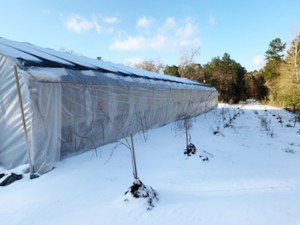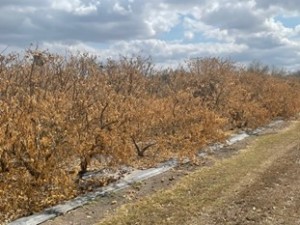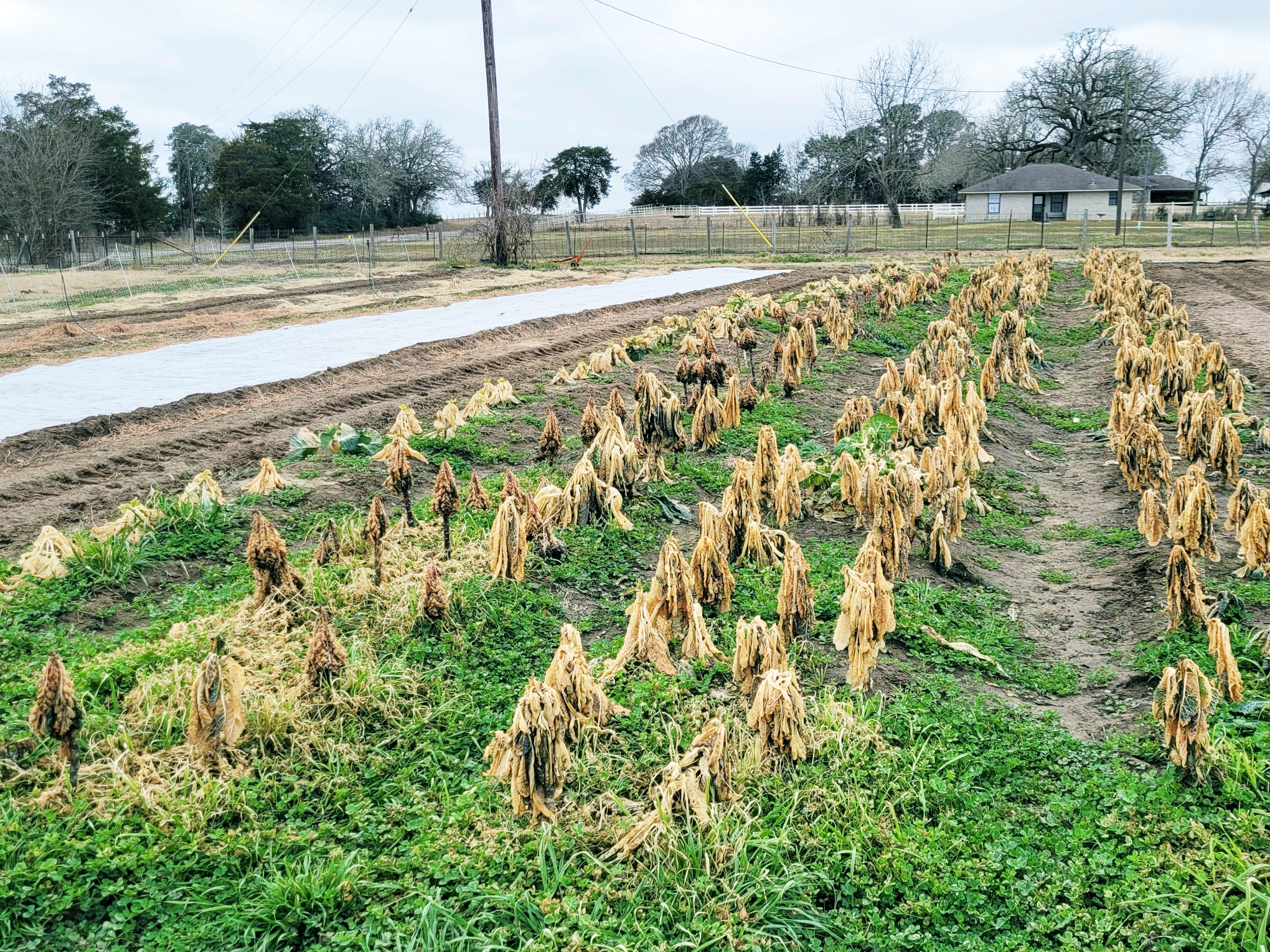By: Tucker Wilson
March 15 – Texas’ small producers felt the detrimental extent of February’s North American winter storm, unofficially referred to as Uri, with wide-reaching effects on everything from crops to cattle and foliage, according to preliminary data.
Small-scale horticulture producers lost gardens, crops, citrus trees, and the freeze also damaged irrigation systems. Prairie View A&M University’s Cooperative Extension Program Agriculture and Natural Resource Program Leader Clarence Bunch, Ph.D., said small limited resource producers suffered a significant loss, so much so that the actual impact could take months to discover.
“We know that farmers suffered, but on a smaller scale,” Bunch said. “Our producers are still trying to pick up the pieces and determine whether they can salvage anything.”
Although some producers took preventive measures to protect their crops, some specialty crop producers lost thousands of acres of their crops, including tomatoes, strawberries, turnups, watermelon, cabbages, potatoes, onions, and grapefruit. In some places, crop loss included sugarcane, grain sorghum, milo, and corn. According to Bunch, early estimates also indicate hay producers lost hay crops that were nearly ready for spring hay harvest.
“Our early estimates indicate a substantial loss,” PVAMU Extension Agent for Willacy County Roland Zamora said of the nearly 80,000 acres of cropland lost.
Approximately 10 percent of corn and sorghum crops had already been planted and were just emerging. They will now have to be replanted. On citrus crops, most of the fruit that had not been harvested was lost and so were the new blooms that would have been included in 2022 production. PVAMU Extension Agent for Starr and Hidago counties Joseph Ozuna indicated limes and lemons had a harsher reaction to the weather compared to oranges and grapefruits with $2 million in damages to fruit, $2 million to trees, and $1 million nursery plants. Zamora said 20 percent of these numbers are limited resource producers and socially disadvantaged farmers and ranchers.
The storm’s impact also extended to forage, hay, and native pastures, with producers suffering major losses. The storm resulted in high immortality rates in livestock, specifically with beef cattle and goat and sheep herds. Those on the front lines echo that sentiment. “Calves that were sick in the feedlot and newborn calves were in more jeopardy of death loss due to hypothermia,” PVAMU Fort Bend County Agriculture and Natural Resources Extension Agent Derrick Banks said. Poultry producers were also directly impacted, as they lost mature producing birds, chicks, and eggs. In fact, even PVAMU Gov. Bill and Vara Daniel Farm and Ranch experienced livestock loss.
Based on the extent of the loss, it’s apparent that the storm had a significant impact to farmers who were not prepared.
With famers still reeling from the losses due to February’s winter storm, the effects reach farther than the bounds of the farms.
Recently, Texas Agriculture Commissioner Sid Miller acknowledged that the state’s weather and power crisis is worse than COVID-19 on the food supply chain. Adding to the issue, increased food demand fueled by COVID-19 had already exceeded agricultural supply. This month — and for the next four to six weeks at least — it’s another nearly unprecedented demand for food with very little supply from farms across Texas. The impact is sure to be felt most among the state’s limited resource producers who had access to little to no crop protection resources. Thankfully, assistance is available to address the impact. Landowners who need technical and financial assistance due to the damage caused by Winter Storm Uri can contact USDA NRCS.
 Clarence Bunch, Ph.D.
Clarence Bunch, Ph.D.
Agriculture & Natural Resources Program Leader
clbunch@pvamu.edu
(936) 261-51167

